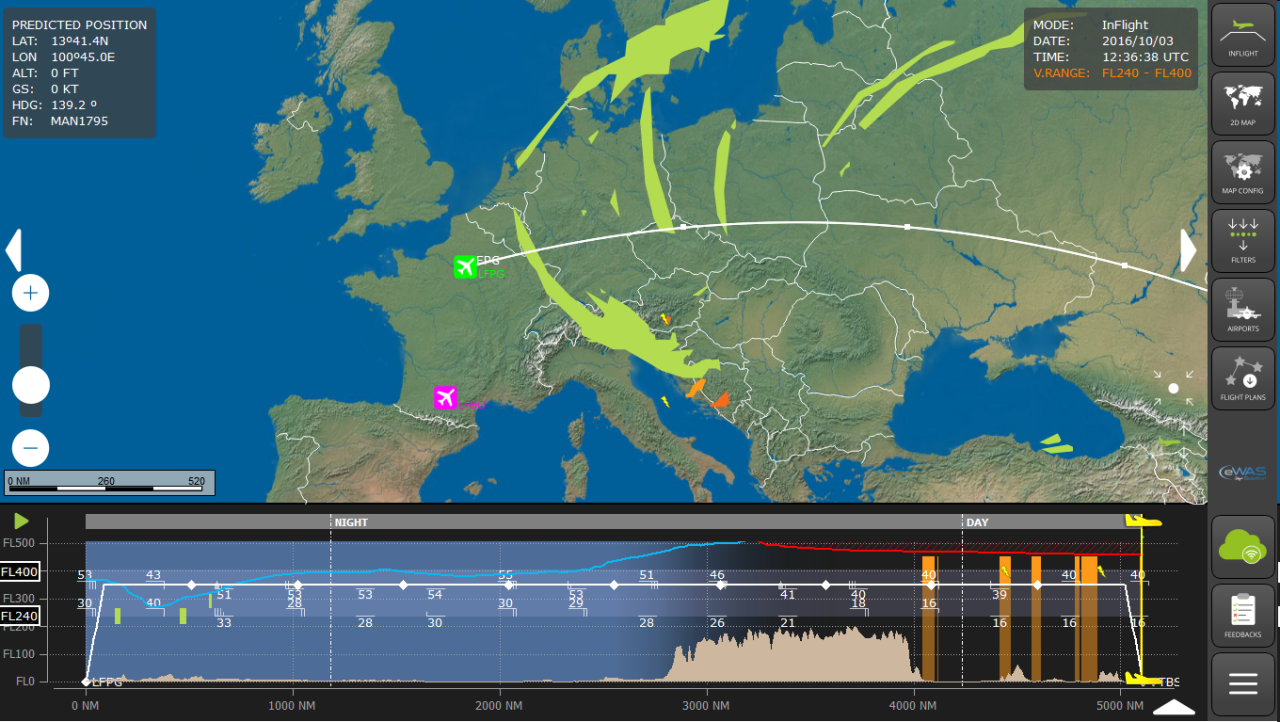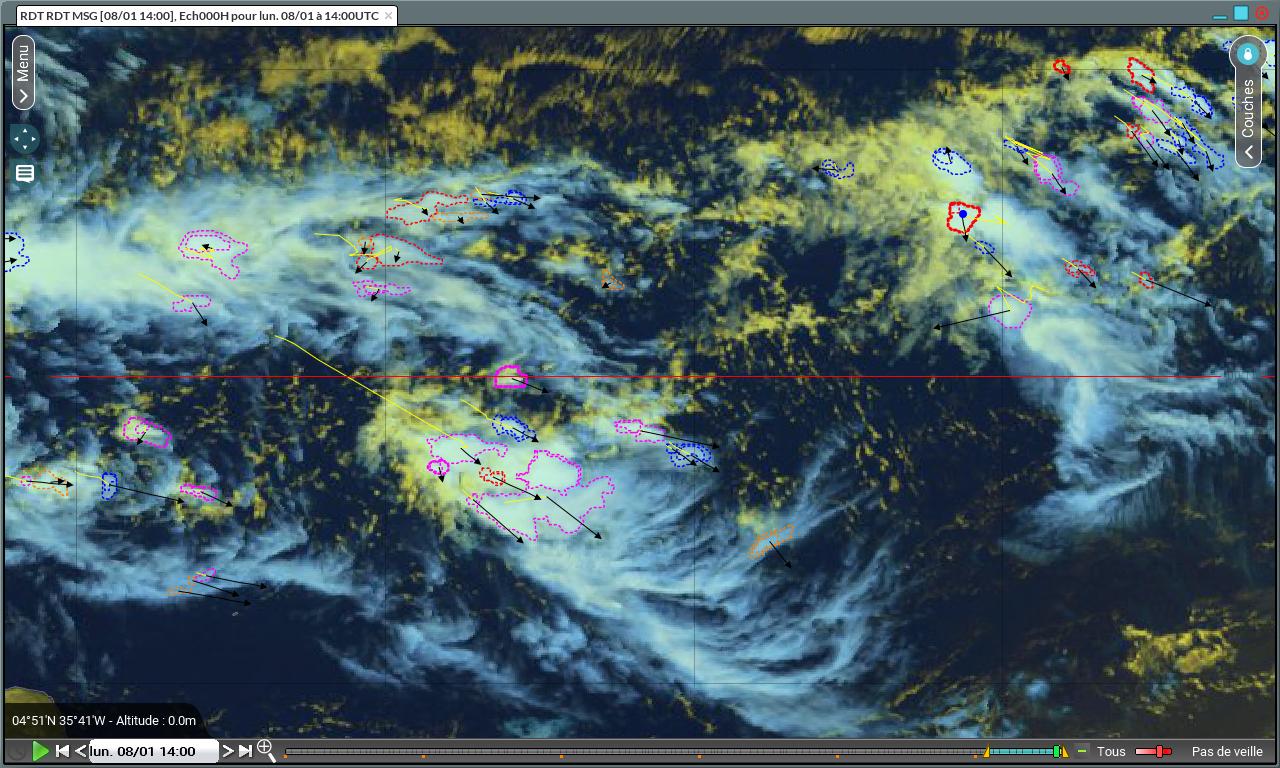Weather in the cockpit

Météo-France and Spanish company GTD have taken part in a number of European aerospace research programmes since 2004 (Flysafe, Alicia). These exploratory studies show that it was now possible to provide near real-time weather data to pilots in the cockpit itself.
Additionally, from 2013 onwards, both bodies positioned their work towards the operational transition of an on-board embedded weather solution available on tablets, known as the Electronic Flight Bag (EFB).
Discussions with a major airline meant pilot needs could be better identified.
In terms of storm forecasting, Météo-France developed a comprehensive observation and forecasting service for convective cells, the Global RDT (Rapid Developing Thunderstorm), which is therefore particularly appreciated by pilots.
Forecasting of turbulence, frost formation and winds aloft can be provided and updated regularly thanks to various algorithms based on the comprehensive ARPEGE model developed by Météo-France.
As such, all of these weather services are provided to pilots in near real-time via an ergonomic interface developed by GTD, accessible directly on touch tablets for more efficient flight planning. Increased connectivity on certain aircraft also facilitates access to this data during flights, notably during long-haul flights.
